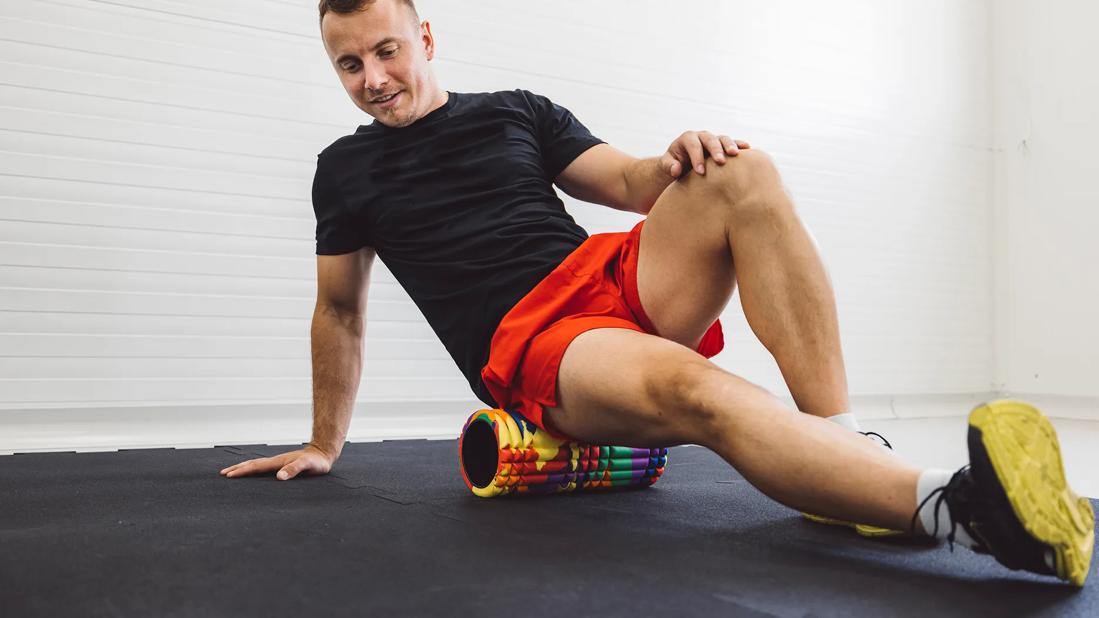Know when and how to use foam roller and lacrosse ball – and when to seek help

Lower back pain is a common problem in the general population, but nurses experience low back pain more than any other profession, according to a report published by the National Center for Biotechnology Information. About 90 percent of nurses will experience job-related back pain in their lifetime, and those who work in the intensive care unit or operating room, or who must reposition or move patients are at greatest risk, according to the report.
Advertisement
Cleveland Clinic is a non-profit academic medical center. Advertising on our site helps support our mission. We do not endorse non-Cleveland Clinic products or services. Policy
Left unmanaged, back pain can impede quality of life and have an impact on caregiver job satisfaction. It is important to seek medical attention for back pain if it lasts longer than two weeks and interferes with normal daily activities, but for milder aches and pains, massage, exercise and stretching all can help alleviate soreness.
Low-tech massage tools are surprisingly effective at providing some relief, according to Chad Adams, D.C., a Cleveland Clinic chiropractor. “I’m a big believer in simple tools for back pain,” he says.
Below are some of those tools, along with tips for using them.
Foam rollers are simple tube-shaped cylinders made of dense foam that can relieve back pain in your trigger points (i.e., muscle knots, kinks and areas of extreme tightness). Rollers come in different densities. If you’re in great shape, you might want a very hard roller. Look for one that doesn’t dent if you squeeze it. If you’d prefer a softer touch, choose a roller with a little more give. Keep in mind that the process will be mildly uncomfortable at first. It will get better as you do it more often. In general, if you feel any sharp pain while you’re foam rolling, contact your physician or physical therapist.
How to use a foam roller for your lower back: Place the roller under your trigger points and lie across it. Let your body weight press the roller into the tight spots. Do your best to stay still. That deep, steady pressure should ease tension.
It may help to roll just above or below a trigger point. Use trial and error to find the right place to press. It might feel uncomfortable while you roll, but your muscles should feel more relaxed when you’re done.
Advertisement
Foam rolling the lower body: Foam rolling also offers a number of benefits for the lower body. It can improve range of motion, blood flow and body temperature.
When rolling the hip flexors and quadriceps, start by lying on top of your foam roller with your elbows out in front of you. As you roll, keep in mind that the basic premise is to start higher up on the muscles and work your way down. Stay at the top of the section for a few seconds, then gradually move down, spending a few seconds in each section as you continue to move down the muscle group. You should be able to work down each muscle group about three to five times within a minute. If you find any tender areas, try to stay on them for a little bit to work out the tightness.
When you’re working on the hip flexors, avoid rolling over any bony prominences. And make sure you’re rolling below the hip bone and working your way to right above the knee.
Foam rolling the hamstrings: When rolling in this area, start right below the bone in the buttock. Avoid rolling on top of the bone because it can be uncomfortable. As you roll, work your way down and focus on sections of the muscles.
Foam rolling the glutes: It’s important to work on this area because tight buttock muscles can lead to pain in the hips, back and other areas.
A foam roller is difficult to use for neck and shoulder pain. For those areas, a simple rubber lacrosse ball may be helpful.
Follow the same steps you’d use for a foam roller. If you can’t reach the knots by lying on the floor, try standing along a wall and leaning back against the ball. “Sometimes a little creativity is required to get to the hard-to-reach places,” Dr. Adams says.
Advertisement
Dr. Adams recommends massaging with your tool of choice up to five or six times every day, for three to five minutes each time. “You’ll get a much better response if you do it several times a day,” he says.
The exception: Don’t do it right before a workout. The goal of a trigger point massage is to relax the muscles. But jumping right into physical activity afterward can raise your risk of injury.
Instead, try doing it before bedtime. Take 10 minutes to attack your trigger points, and your relaxed muscles might help lull you to sleep, Dr. Adams adds.
Using a foam roller or rubber ball on a regular basis should lessen pain and provide greater range of motion in your tight spots.
Advertisement
Advertisement

Study illuminates value of shared decision-making

How hospitals can weave ethics into daily nursing practice to strengthen patient-centered care

Mobility carts provide exercises and tools

Nurse researchers explore the relationship between readmission risk scores and acute care transfers

Guiding nurses amid a constantly evolving healthcare landscape

Ideation session generates solutions to medication administration errors

Caregivers spearhead changes that improve patient care, shape hospital culture

Building a culture that supports, engages and empowers nursing staff